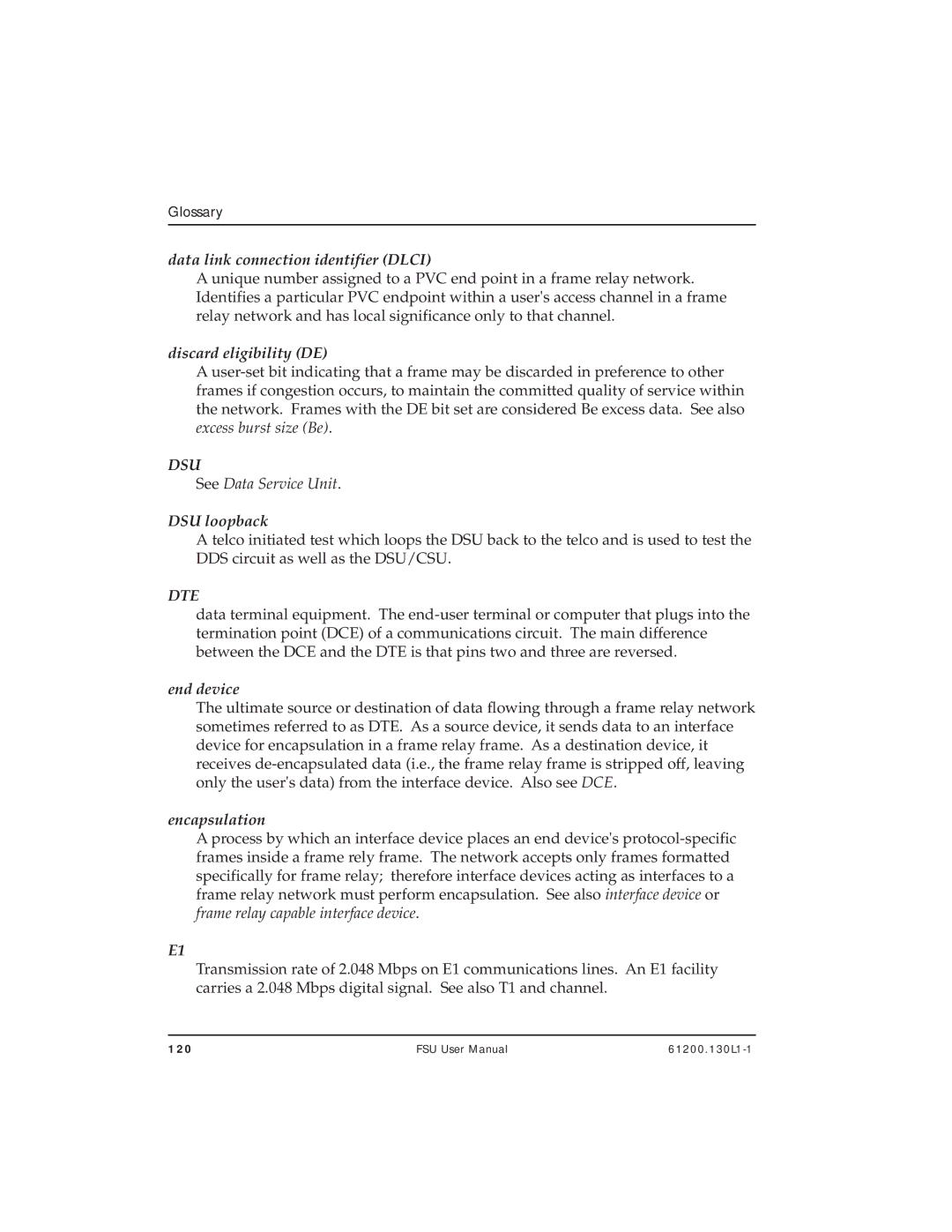
Glossary
data link connection identifier (DLCI)
A unique number assigned to a PVC end point in a frame relay network. Identifies a particular PVC endpoint within a user's access channel in a frame relay network and has local significance only to that channel.
discard eligibility (DE)
A
DSU
See Data Service Unit.
DSU loopback
A telco initiated test which loops the DSU back to the telco and is used to test the DDS circuit as well as the DSU/CSU.
DTE
data terminal equipment. The
end device
The ultimate source or destination of data flowing through a frame relay network sometimes referred to as DTE. As a source device, it sends data to an interface device for encapsulation in a frame relay frame. As a destination device, it receives
encapsulation
A process by which an interface device places an end device's
E1
Transmission rate of 2.048 Mbps on E1 communications lines. An E1 facility carries a 2.048 Mbps digital signal. See also T1 and channel.
120 | FSU User Manual |
